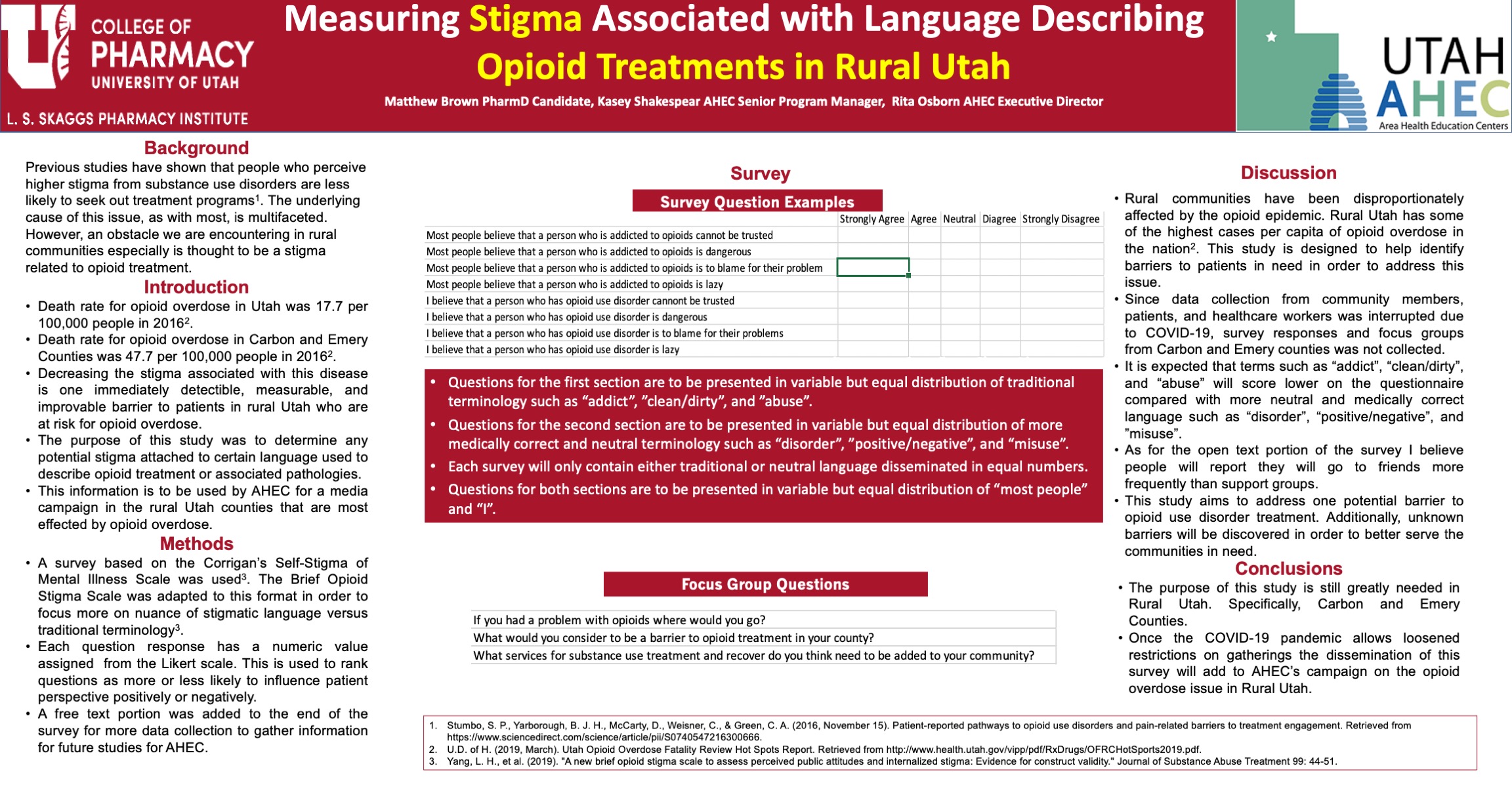Abstract
Introduction
Previous studies have shown that people who perceive higher stigma from substance use disorders are less likely to seek out treatment programs. The underlying cause of this issue, as with most, is multifaceted. However, an obstacle we are encountering in rural communities especially is a stigma related to opioid treatment. This study aims to identify those stigma-related barriers to best address this population.
Methods
A survey based on Corrigan’s Self-Stigma of Mental Illness Scale was used. The Brief Opioid Stigma Scale was adapted to focus more on the nuance of stigmatic language versus traditional terminology. The recipients of this questionnaire will be patients, community members, and non-prescribing healthcare workers. The purpose is to gauge the stigma associated with the use of certain words currently associated with opioid use disorder. A similar questionnaire in equal numbers of distribution with regards variation to will be given to each subset of participants to get a comprehensive opinion of how different populations view the terminology associated with opioid use disorders. The survey will be disseminated through the Redcap digital survey software.
Results
Based on previous studies patients, social workers, and community members surveyed were more likely to view terms such as “addict” negatively as opposed to “use-disorder”. However, finding community members, healthcare workers, and patients in Price and Emery Counties in Utah to be surveyed was greatly affected by the COVID-19 pandemic. Originally, this study and associated survey were supposed to be disseminated to attendees of AHEC events. Unfortunately, due to the COVID-19 pandemic, all events were initially canceled. This would have reached community members, patients, and healthcare practitioners in attendance with some connection to Price and Emery Counties. Additionally, the relationship between AHEC and affiliated clinics was stressed due to the COVID-19 pandemic. As a result, the liaison between AHEC and healthcare facilities in Price and Emery postponed the distribution of the study. The result was no participation in the intended survey.
Conclusion
It was expected that patients, healthcare workers, and community members would have been more likely to respond with favorable responses to less negatively connotated language with regards to opioid use disorder. They would have also given insight into other barriers that can be addressed to better suit the rural communities AHEC serves. These findings would have been in line with previous studies that have shown that patients are less likely to seek opioid-use treatment when certain language is used. These assumptions can be made based on previous data but cannot be confidently and accurately applied to these specific Utah counties in need.



Responses
This is a very interesting project! The survey and focus group questions are well-designed and insightful.
I appreciate the feedback. I took previous studies’ use of the Likert scale as well as other research done with language connotation. I feel as though the outcome was mostly predictable but it would have been good to have more data on the subject to help AHEC with their grand and ultimate goal.
Yes language and perceptions are important in addressing care. Thank you.
I appreciate the feedback. It is not something I considered until participating in this project. I wish I had more data to give back in order to substantiate what my beliefs are on the topic. Especially with as very specific community.
Hi Matt, very interesting and important project. It’s unfortunate that COVID disrupted your work, but hopefully someone will be able to pick up where you left off. Do you think similar studies should be conducted in rural Nevada and/or other Western states?
I appreciate the comment. I hope the idea of the project with the research that was done was enough to influence AHEC with enough information to either take the project further or adapt the research that has already been done to help Carbon and Emery Counties. The downside is that it would have been good to get population-specific data for those communities. My project mentor has all the data so if he wants to continue it he has access to the survey as well as the research data that was done. I feel like the outcome was somewhat predictable but the impact would still be impactful even if they just implement previous studies outcomes.
Comments are closed.